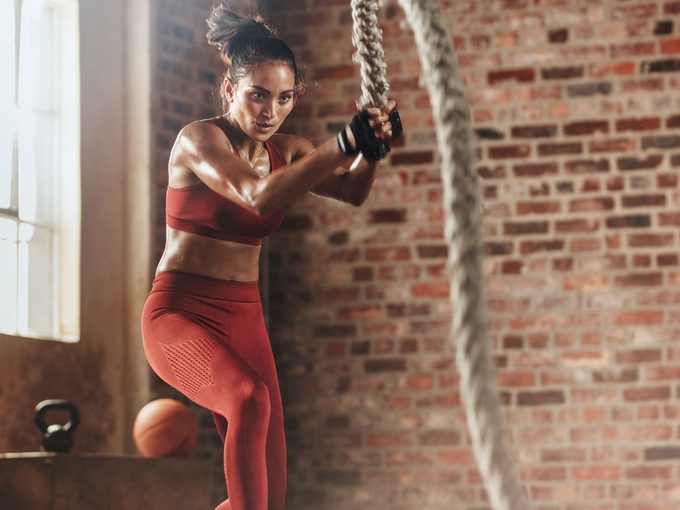How Mindfulness Can Help Improve Your Athletic Performance
Whether you’re a serious athlete or a weekend warrior, mindfulness and meditation may be the secret to a better, faster, stronger you.

Most people see meditation as a time to be zen or a way to explore your spiritual side. “That’s true, but there’s a side to mindfulness that’s just mental training,” says Sean Finnell, co-founder and chief experience officer of Mindset Brain Gym in Toronto. Mindfulness might be the best-kept secret of elite performers, but it can do wonders for everyday athletes, too. Here’s how a regular meditation practice can help you get your head in the game.
Focus on your workout
Whether you’re struggling to push through a set of pull-ups at the gym or make it through the last kilometre of your run, you’re relying on mental fitness as much as physical strength to cross the finish line. When you start to feel fatigue, those nasty negative thoughts, like “I can’t do this,” can creep in. There’s also the risk of your mind wandering off task to an upcoming work meeting or something else on your to-do list, which can compromise your physical performance. Meditation teaches focus — something that’s incredibly useful in an athletic context, says Finnell. “There’s a lot of research on the idea of ‘the zone’ or a ‘state of flow,’” he says, “and when you’re able to harness your attention through mindfulness, you’re more likely to reach your goal.”
Push harder (when you need it)
A mindfulness practice can help you challenge yourself at the gym or during a game. “With mindfulness, you can get a better sense of ‘interoception,’ or your sense of your body’s signals, so you can actually get closer to that breaking point without actually breaking,” says Finnell. For elite athletes, that can mean the difference between getting a medal and not making the podium. It can also spell the difference between a victory and an injury because heightened body awareness helps you know when you actually need to put the brakes on. “Even for everyday athleticism, it’s very important to know your limits and understand your body better,” says Finnell. Here are four more ways elite athletes optimize their performances.
Zero in on your breathing
During a tough game or a strenuous workout when you’re panting like crazy, you’d think breathing properly would be obvious. But many of us breathe incorrectly – or even hold our breath – as a workout intensifies. Certain forms of meditation focus on breathing and can train you to inhale and exhale steadily, which is required during exercise to keep delivering oxygen to your muscles, regulate your heart rate and turn off that fight-or-flight response for optimal performance, says Finnell. “When you’re able to tap into your breathing and let everything else fall away, you’re able to reduce your stress levels and turn off your fight-or-flight response in a matter of seconds,” he says. “That’s why you see NBA players doing breath work when they’re benched.” Just make sure you avoid making these meditation mistakes that could potentially stress you out even more.
Try this: The next time you’re doing a recovery walk on the treadmill, do “box breathing” to bring your heart rate down quickly. It’s as simple as inhaling for three seconds, holding for three seconds, exhaling for three seconds and then holding for another three seconds. Repeat five times.
This device can help…
When synced to the app, the Muse 2 headband gives feedback on brain activity, heart rate and more by translating brain and biological signals into tangible sounds and visualizations. For instance, you’ll hear thunderstorms when your mind wanders and waves that match your breathing rate.
MUSE 2, $299 at choosemuse.ca.

Looking for a mid-week getaway? Learn why West Hollywood is the ultimate wellness vacay.




